David B. Roth: Director of New Penn Center for Precision Medicine
 David B. Roth, Simon Flexner Professor and chair of pathology & laboratory medicine, has been appointed director of the new Penn Center for Precision Medicine, a greatly expanded effort for Penn Medicine in this burgeoning field. In his new role, he will lead efforts to accelerate the implementation of precision medicine into clinical care. Dr. Roth is an internationally recognized expert in DNA repair and mechanisms of programmed gene rearrangements during immune cell maturation.
David B. Roth, Simon Flexner Professor and chair of pathology & laboratory medicine, has been appointed director of the new Penn Center for Precision Medicine, a greatly expanded effort for Penn Medicine in this burgeoning field. In his new role, he will lead efforts to accelerate the implementation of precision medicine into clinical care. Dr. Roth is an internationally recognized expert in DNA repair and mechanisms of programmed gene rearrangements during immune cell maturation.
Dr. Roth, who will remain chair of the department, will work with senior leaders at Penn Medicine to develop a strategic plan to better integrate academic research with clinical operation in this field. “By leveraging our many strengths in biomedical research and developing synergies with our clinical programs, a primary goal of the new center is to create and implement precision medicine-based clinical care pathways embedded in systems of care,” Dr. Roth said.
“In the era of precision medicine, innovative, multidisciplinary approaches will transform Penn Medicine’s clinical care, shortening the pathway from initial accurate diagnosis to highly individualized therapy,” said J. Larry Jameson, dean of the Perelman School of Medicine and executive vice president of the University of Pennsylvania for the Health System.
For example, recent advances in genomic medicine revealed that adenocarcinoma of the lung, once regarded as a single entity based on its appearance under the microscope, is actually a group of distinct disorders, each with characteristic molecular drivers. This knowledge allows oncologists to use more tailored therapies to treat people. “In addition to cancer, we’re using precision medicine approaches to diagnose and treat a wide variety of disorders, ranging from preterm birth to cardiovascular disease,” Dr. Roth said.
Under his leadership, the new center will implement demonstration projects to bring precision medicine into routine health system operations and measure their impact. A dedicated analytics team will capture data on both medical and economic outcomes. The center will also play an important role as a technical resource and coordinator for external grant applications on precision medicine.
Dennis Culhane and John Fantuzzo: $1.9 Million Grants for Evidence-based Policy and Integrated Data

 Two recent grants, totaling nearly $2 million, have been awarded to University of Pennsylvania professors Dennis Culhane and John Fantuzzo, enabling the continued development and expanded use of Integrated Data Systems, or IDS, for evidence-based policymaking through the Actionable Intelligence for Social Policy, or AISP, initiative.
Two recent grants, totaling nearly $2 million, have been awarded to University of Pennsylvania professors Dennis Culhane and John Fantuzzo, enabling the continued development and expanded use of Integrated Data Systems, or IDS, for evidence-based policymaking through the Actionable Intelligence for Social Policy, or AISP, initiative.
IDS link existing administrative data across multiple agencies and community providers to improve programs and policies through evidence-based collaboration. IDS help leaders and researchers evaluate what works, what doesn’t and how social problems can be effectively solved to meet the needs of families and individuals.
The grants came this year from both the Laura and John Arnold Foundation—$1.1 million—and the John D. and Catherine T. MacArthur Foundation—$800,000.
The MacArthur Foundation has been a longtime supporter of AISP and has contributed more than $5 million to the initiative since 2008. This is the first time AISP has received funding from the Laura and John Arnold Foundation.
“MacArthur continues to generously support our work in the development, use and innovation of IDS,” said Dr. Fantuzzo, the Albert M. Greenfield Professor of Human Relations in Penn’s Graduate School of Education. “Through this most recent grant, we will be able to implement a training and technical assistance system to benefit states and counties that are developing IDS, create and test a model of IDS use for randomized control trials and generate recommendations for continued innovations in the field by establishing the AISP Research Consortium.”
With additional funding from the Laura and John Arnold Foundation, a team led by Dr. Fantuzzo and Dr. Culhane, the Dana and Andrew Stone Chair in Social Policy in the School of Social Policy & Practice, will embark on “AISP Innovation.” The new initiative will enable AISP to refine and test a more efficient, secure and effective approach to IDS for state and local governments.
“Our intent is to generate uniform standards of best practices for the most challenging aspects of operating an IDS,” Dr. Culhane said.
Through a comprehensive 2013 study, Dr. Culhane and Dr. Fantuzzo identified the main barriers faced by states and counties with existing IDS. Challenges include agency concerns about data security as well as the time-consuming processes required to secure the legal agreements and the cumbersome contract procurements necessary to get the work done. Leadership also needs an effective data infrastructure with state-of-the-art technology tools that can link multiple data sources over time, store and update linkage keys and extract cohorts for research and analysis.
To further improve data security but maintain access, a secure system is also needed for remote analysis of data. By addressing these needs, AISP Innovation aims to eliminate obstacles and help government more quickly determine what works, for whom and at what cost.
As the concept continues to emerge, the benefits of IDS are expanding and can be pivotal in tracking and improving programs and policies, such as those for juvenile and adult justice, homelessness, health care, education, assisted housing, workforce development and child-welfare services. Thirteen jurisdictions, comprising 26 percent of the United States population, currently maintain an IDS.
The John D. and Catherine T. MacArthur Foundation initially funded the AISP project through a series of grants to Dr. Culhane and Dr. Fantuzzo. More information about AISP is available at www.aisp.upenn.edu and the Understanding Actionable Intelligence for Social Policy animation.
Penn's Grad School Rankings 2017
Penn’s Grad School Rankings 2017
Each year, US News & World Report ranks graduate and professional schools in business, medicine, education, law, engineering and nursing. Five of Penn’s schools are in the top ten list.
In the latest rankings (2017), Penn’s School of Nursing is at #2 among master’s programs in nursing. The Perelman School of Medicine moves up to #3 among top medical schools for research, tied with the University of California-San Francisco and Johns Hopkins University, and moves up to #11 among top medical schools for primary care in another three-way tie with the University of Colorado and the University of Pittsburgh. The Wharton School drops to #4 among MBA programs. The Graduate School of Education moves up to #6, while Penn Law remains at #7. Penn’s School of Engineering & Applied Science remains at #19 in a tie with Northwestern University.
US News does not rank all schools every year, nor does it rank Arts & Sciences as a unit; however, it ranks selected individual disciplines.
Excerpts of the annual rankings of America’s Best Graduate Schools are in the magazine. The complete survey is in the newsstand book, Best Grad Schools. For more on the rankings, see www.usnews.com
Magida Phillips: Senior Director, Business Services’ IT
 The Business Services Division (BSD) announced the recent appointment of Magida Phillips as its senior director, Information Technology. Ms. Phillips will be responsible for the oversight, direction and leadership of all aspects related to technology and systems infrastructure for Penn’s Business Services Division. She will also be accountable for the comprehensive management of all divisional technical operations, including oversight of the Division’s IT Support team, project managers, third-party vendor relationships and other BSD IT managerial staff.
The Business Services Division (BSD) announced the recent appointment of Magida Phillips as its senior director, Information Technology. Ms. Phillips will be responsible for the oversight, direction and leadership of all aspects related to technology and systems infrastructure for Penn’s Business Services Division. She will also be accountable for the comprehensive management of all divisional technical operations, including oversight of the Division’s IT Support team, project managers, third-party vendor relationships and other BSD IT managerial staff.
A Penn alumna, Ms. Phillips is a familiar face among Penn’s IT circles. She began her career at Penn in 1986 and has held positions of increasing responsibility within the Division of Information Systems & Computing (ISC). As a senior IT project leader, she led the LAN Technology Services team, where her accomplishments included developing a firewall consulting service to support schools and centers across the University and rolling out a new VPN service to provide secure remote access to Penn resources. As an IT technical director, she worked closely with campus IT leaders and was instrumental in deploying new University-wide technology services such as Secure Remote Backup, Digital Signage, 1st Generation Virtual Desktop and Penn Endpoint Management. Most recently, as ISC’s director, Client Engagement, Ms. Phillips worked with the IT leaders across campus to identify their organizations’ current and future technology needs.
Ms. Phillips earned her bachelor’s degree in business administration from Penn in 1986.
Elaine Papas Varas: University Director of Financial Aid
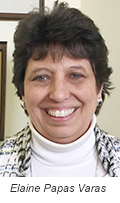 The University of Pennsylvania has named Elaine Papas Varas as the University director of financial aid. Her appointment will be effective March 28, and is the result of a nationwide search. The announcement was made by Michelle H. Brown-Nevers, associate vice president for student registration & financial services.
The University of Pennsylvania has named Elaine Papas Varas as the University director of financial aid. Her appointment will be effective March 28, and is the result of a nationwide search. The announcement was made by Michelle H. Brown-Nevers, associate vice president for student registration & financial services.
Ms. Varas comes to Penn with more than 30 years of experience in financial aid, most recently serving as senior executive director of student financial aid at Drexel University. Prior to joining Drexel, she worked for many years as a university director of student financial aid for Rutgers University Biomedical Health Sciences and the University of Medicine and Dentistry of New Jersey (UMDNJ).x During her tenure at UMDNJ she served as director of the New Jersey Loan Redemption Program and doubled funding support for medically underserved communities. She facilitated federal funding integration of a merger of three state schools and established a nationally recognized Financial Literacy Program.
Her leadership in the field has been acknowledged on a regional and national level, with a gubernatorial appointment to New Jersey’s Board of Higher Education Student Assistance Authority and with her selection as a negotiator with the Department of Education.
“We are excited about Elaine’s commitment to educational access and look forward to her expertise to build upon the success of Penn’s distinctive financial aid program,” Ms. Brown-Nevers said. “She has a proven track record as an innovative leader, possesses a breadth of knowledge and experience and will bring a collaborative approach to enhance the work that we do in support of students and families.”
Ms. Varas received a bachelor’s degree in psychology from Wheaton College and completed graduate coursework in higher education at Rutgers and Columbia University.
At Penn, Ms. Varas will oversee the effective administration of Title IV and Penn’s student financial aid programs amounting to nearly $500 million annually, of which more than $200 million is dedicated to grants for undergraduate students.
Center for Molecular Studies in Digestive and Liver Diseases
Pilot and Feasibility Grant Program 2016: May 16
Purpose and Research Focus
The purpose of Penn’s Center for Molecular Studies in Digestive and Liver Diseases is to unite investigators with interests in digestive and liver physiology and disease and to stimulate others in the biomedical community to enter this area of research. One of the most important aspects of this effort is the funding of Pilot/Feasibility Projects.
The Pilot/Feasibility Project should be related to the focus of the Center, which encompasses molecular studies on the biology or disease of the alimentary tract, pancreas and liver. Relevant investigations include those in developmental biology, nutrition, regulation of gene expression, growth, differentiation and carcinogenesis, the biology of stem cells, molecular genetics, gene therapy and immunology, including growth factors and cytokines.
Eligibility
All faculty members of the University scientific community who meet the eligibility requirements below are invited to submit proposals. Applicants must be a US citizen or have a permanent visa.
1. New investigators who have never held extramural support (R01 and P01).
2. Established investigators in other areas of biomedical research who wish to apply their expertise to a problem in digestive and liver disease.
3. Established digestive and liver investigators who wish to study an area that represents a significant departure from currently funded work.
4. Pilot project awardees are eligible for two years of funding; renewals are evaluated competitively.
Proposal Preparation
1. Submit documents through the online form located at the bottom of the Pilot and Feasibility Grant Program webpage: https://www.med.upenn.edu/molecular/pilotproject.shtml Complete proposals are due by Monday, May 16.
2. Format
• Cover page: includes abstract of up to 250 words and list of approved or pending IACUC/IRB protocols.
• NIH biographical sketch.
• NIH other support.
• Budget and justification: one year, $20,000, one page only.
• Background, preliminary results, estimated core usage, research plan and future directions; up to four pages total.
• Senior investigators should indicate how this project represents a new direction in their research.
• References: one page only.
• Appendix: pertaining to preliminary data only, no reprints.
For additional information, please contact: Center for Molecular Studies in Digestive and Liver Diseases, tel: (215) 573-4264, fax: (215) 898-0573 or email: kimmeyer@upenn.edu
Penn Libraries’ Launch of The Daily Pennsylvanian Digital Archives
It’s fascinating to see a University change as the world around it changes, and the public will soon be able to navigate Penn’s transformation through the pages of The Daily Pennsylvanian—from anywhere in the world. The Penn Libraries recently launched the first edition of the ongoing project, The Daily Pennsylvanian Digital Archives, a collection of more than 40 years worth of digitized, searchable issues of the newspaper. The project was spearheaded by David McKnight and Jessica Dummer of the Penn Libraries’ Kislak Center for Special Collections, Rare Books and Manuscripts and follows Penn’s history as told through the eyes of its students, creating a unique lens for students and scholars to study Penn’s rich history.
In addition to its scholarly value, this archive holds particular interest for the Penn alumni community, offering them a new, dynamic way to relive their Penn experiences. This desire to provide a fresh reconnection with Penn spurred Penn Libraries Overseer Edward P. Mally, W’83, and his wife, Julia Lang Mally, W’83, to generously donate the seed money for this extensive project. Inspired by the idea of rediscovering Penn through The Daily Pennsylvanian, this initial gift was followed by donations from Eric D. Brotman, C’94, and the Class of 1979. Mr. Brotman counts the memories he has from working on The Daily Pennsylvanian among the best of his entire career and feels that the archive is “like discovering a long-lost diary of [his] time on campus.”
At this time, the Libraries are providing access to a 40-year portion of the project on The Daily Pennsylvanian Digital Archives website, but they are still seeking funding to make a full virtual facsimile of The Daily Pennsylvanian available. If you are interested in learning more about how you can help make all 24,700 issues available online, please contact Allison Chiacchiere at the Penn Libraries’ Advancement Office at aleib@upenn.edu
See the archive at: http://dparchives.library.upenn.edu/
Launch of Digital Library of Northern Thai Manuscripts

Working with the National Library of Laos, Penn professor Justin McDaniel, chair of the department of religious studies, has launched the Digital Library of Northern Thai Manuscripts at http://lannamanuscripts.net as a resource for the study of traditional literature from this region. At present, the digital library contains images of over 4,200 manuscripts that can be searched and viewed online or freely downloaded, and to which more manuscripts will be added.
The database contains four collections: digitized microfilms from the Preservation of Northern Thai Manuscripts Project (with permission of Chiang Mai University Library), digitized microfilms and also handwritten copies of manuscripts made in the early 1970s during research conducted by Harald Hundius, and directly digitized manuscripts made during the current digital library project.
All digitization was funded by the German Federal Foreign Office. The digital library project was funded by the Henry Luce Foundation, the Andrew W. Mellon Foundation, the University of Pennsylvania Libraries and the School of Arts & Sciences at the University of Pennsylvania.
The project was implemented by the National Library of Laos, based on the existing Digital Library of Lao Manuscripts (http://laomanuscripts.net).
 David B. Roth, Simon Flexner Professor and chair of pathology & laboratory medicine, has been appointed director of the new Penn Center for Precision Medicine, a greatly expanded effort for Penn Medicine in this burgeoning field. In his new role, he will lead efforts to accelerate the implementation of precision medicine into clinical care. Dr. Roth is an internationally recognized expert in DNA repair and mechanisms of programmed gene rearrangements during immune cell maturation.
David B. Roth, Simon Flexner Professor and chair of pathology & laboratory medicine, has been appointed director of the new Penn Center for Precision Medicine, a greatly expanded effort for Penn Medicine in this burgeoning field. In his new role, he will lead efforts to accelerate the implementation of precision medicine into clinical care. Dr. Roth is an internationally recognized expert in DNA repair and mechanisms of programmed gene rearrangements during immune cell maturation.

 Two recent grants, totaling nearly $2 million, have been awarded to University of Pennsylvania professors Dennis Culhane and John Fantuzzo, enabling the continued development and expanded use of Integrated Data Systems, or IDS, for evidence-based policymaking through the Actionable Intelligence for Social Policy, or AISP, initiative.
Two recent grants, totaling nearly $2 million, have been awarded to University of Pennsylvania professors Dennis Culhane and John Fantuzzo, enabling the continued development and expanded use of Integrated Data Systems, or IDS, for evidence-based policymaking through the Actionable Intelligence for Social Policy, or AISP, initiative. The Business Services Division (BSD) announced the recent appointment of Magida Phillips as its senior director, Information Technology. Ms. Phillips will be responsible for the oversight, direction and leadership of all aspects related to technology and systems infrastructure for Penn’s Business Services Division. She will also be accountable for the comprehensive management of all divisional technical operations, including oversight of the Division’s IT Support team, project managers, third-party vendor relationships and other BSD IT managerial staff.
The Business Services Division (BSD) announced the recent appointment of Magida Phillips as its senior director, Information Technology. Ms. Phillips will be responsible for the oversight, direction and leadership of all aspects related to technology and systems infrastructure for Penn’s Business Services Division. She will also be accountable for the comprehensive management of all divisional technical operations, including oversight of the Division’s IT Support team, project managers, third-party vendor relationships and other BSD IT managerial staff. The University of Pennsylvania has named Elaine Papas Varas as the University director of financial aid. Her appointment will be effective March 28, and is the result of a nationwide search. The announcement was made by Michelle H. Brown-Nevers, associate vice president for student registration & financial services.
The University of Pennsylvania has named Elaine Papas Varas as the University director of financial aid. Her appointment will be effective March 28, and is the result of a nationwide search. The announcement was made by Michelle H. Brown-Nevers, associate vice president for student registration & financial services. 
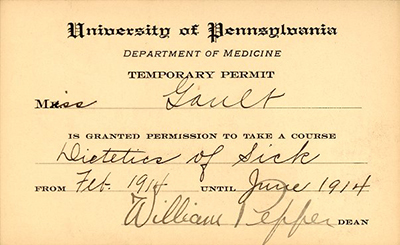
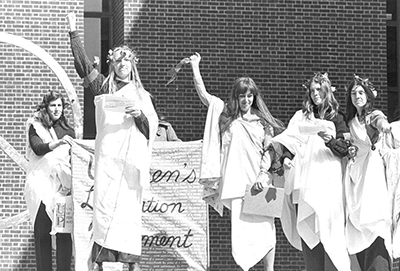
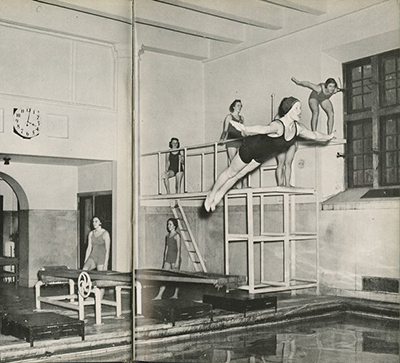



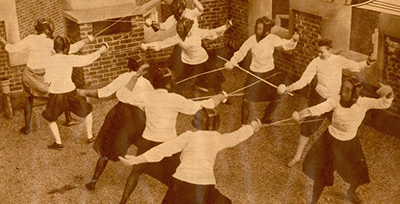
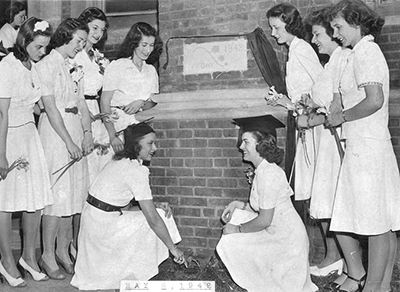

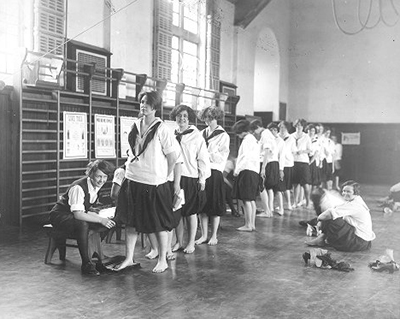



 The history of the Morris Arboretum is rich with Japanese influences. Experience the beauty of the Arboretum’s cherry tree collection in bloom. Both Saturdays—April 9 and 16—will feature traditional Japanese cultural activities. Visitors are invited to discover and appreciate the variety of cherry species planted throughout the Arboretum. They expect that some of the earliest cherries, such as the Okame, could be blooming by April 9. The later blooming cherries, including Higan and Yoshino, could be in bloom by April 16. Morris Arboretum is generally about 8-10 days behind DC. To learn more about official bloom times, refer to the National Park Service’s website for DC:
The history of the Morris Arboretum is rich with Japanese influences. Experience the beauty of the Arboretum’s cherry tree collection in bloom. Both Saturdays—April 9 and 16—will feature traditional Japanese cultural activities. Visitors are invited to discover and appreciate the variety of cherry species planted throughout the Arboretum. They expect that some of the earliest cherries, such as the Okame, could be blooming by April 9. The later blooming cherries, including Higan and Yoshino, could be in bloom by April 16. Morris Arboretum is generally about 8-10 days behind DC. To learn more about official bloom times, refer to the National Park Service’s website for DC: 
 You may be aware of recent hoopla surrounding new “chip” credit cards, or maybe you might have received one from your bank. But what does this mean?
You may be aware of recent hoopla surrounding new “chip” credit cards, or maybe you might have received one from your bank. But what does this mean?